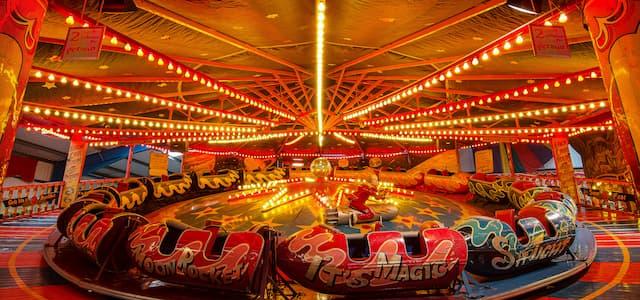
Outstanding Tudor manuscripts saved for the nation
A treasure trove of family, household and estate papers from the twelfth to the twentieth century has been saved for the nation.

Worth almost £1million, the collection of Hengrave Hall Manuscripts, including fascinating papers from the Tudor period, was in danger of being broken up and sold at auction.
Following a campaign to save the papers by Cambridge University Library, their future is now safe following a grant of nearly £285,000 by The National Heritage Memorial Fund (NHMF) which allows the Library to complete the purchase.
The manuscripts comprise papers accumulated or collected by various families whose main home was the celebrated Tudor mansion Hengrave Hall in Suffolk, built in the 1520s. They include correspondence from King Henry VIII, Queen Mary, Sir Philip Sidney, Fulke Greville, Thomas Washington (ancestor of George Washington) and many other prominent figures of the sixteenth century.
The Keeper of Manuscripts and University Archives, Dr Patrick Zutshi, said: “The Hengrave Hall Manuscripts are a remarkable source for national, regional and local history over a period of seven centuries and one of the finest Tudor archives still in private hands. We are delighted that, through the operation of the 'Acceptance in Lieu' scheme and the generosity of the National Heritage Memorial Fund and other bodies, their future has been secured in Cambridge University Library.”
Stephen Johnson, Head of the National Heritage Memorial Fund, said: "Each part of our heritage saved by the NHMF is so central to the story and identity of our nation, it’s hard to conceive of it being lost or leaving the country. Yet as this collection of manuscripts illustrates, there are real treasures which have been in public collections for some time which are still at risk. The news that the Hengrave Hall Manuscripts will now always have a safe home is a wonderful start to the new year."
One letter from Henry VII to Sir Richard Long ordered Long's attendance on his person with 100 able footmen and 6 horsemen being "determyned to invade the Realme of ffraunce this somer with a Roiall Armye in our owne personne." Another, less elevated, missive from Thomas Washington discusses a recent delivery of fish: "...that the sturgeon was not good & swete, whereof I am ryght sory, yett was I dyd pack it I Insure you it was as good & swete fyshe as ever was eaten,..."
A letter signed by Edward VI a month after his fourteenth birthday to the Earl of Bath (who had married the widow of Sir Thomas Kitson, builder of Hengrave Hall), summoned him to court, “being very desirouse for sundry matters of importaunce towching the state both of us and our realme to have you here for a tyme and to use your advise and counsel”.
Of particular value are the household accounts, which give a fascinating glimpse of domestic life in Tudor times. The building accounts provide an excellent insight into the construction of the building in the early sixteenth century. There are records of frequent pre-Shakepearean theatrical and musical performances in the house (there is even an inventory of madrigalist John Wilbye's chamber).
The collection, and especially the Kitson correspondence, has enormous value for the history of Roman Catholicism in England (the Kitsons remained Catholics after the Reformation). It will also be of specific interest for the vast collection of Suffolk documents and medieval deeds from the twelfth century onwards.
Auctioneers Bonhams were instructed by the owners of the documents to sell all the more valuable sections in October 2003. At the University Library’s request, the collection was instead offered under the 'Acceptance in Lieu' scheme administered by the Museums, Libraries and Archives Council, on condition that it should remain in the Library and at a valuation of £840,000. However, the tax satisfied only part of the purchase: the Library was told it would have to find another £456,853 by the end of 2005 to prevent the manuscripts being sold at auction, as originally planned, and the collection being effectively lost to the nation by being split up into lots, exported or acquired by private collectors. In addition to the £283,853 grant from The National Heritage Memorial Fund, a further £173,000 was raised from the Friends of Cambridge University Library, the Friends of the National Libraries, charitable trusts, individual benefactors and including the Library's own contribution.
The Hengrave Manuscripts were available for consultation in Cambridge University Library for over fifty years. When they return to the Library later this year, specialist staff will begin preparing an on-line catalogue of them, and in this way they will be more accessible than ever before to those with an interest in them.
Notes to editors
For over six hundred years the University Library has been central to the support of teaching and research at Cambridge. More than seven million books and periodicals, one million maps and many thousands of manuscripts occupy more than one hundred miles of shelving, which extends by a further two miles every year. The Library collections vary hugely in age and content. Chinese oracle bones from the second millennium BC can be found alongside the latest online scientific journals; illuminated decorations in medieval manuscripts can be studied as originals and as digitised images delivered over the Internet.
As a legal deposit library since 1710, the Library is entitled to acquire a copy of each book and journal published in the UK and Ireland, which results in a rich and diverse collection providing future scholars with the raw materials for research in many fields.
With 2million of its volumes on open shelves, readers have the largest open-access collection in Europe immediately available to them.
An exhibition space at the University Library makes a selection of its outstanding collections available for view to the public. Information about forthcoming exhibitions can be found at http://www.lib.cam.ac.uk/exhibitions/
Since the 1970s the Library has been trying to secure a permanent future for the Hengrave Manuscripts, which have been under threat of sale.

